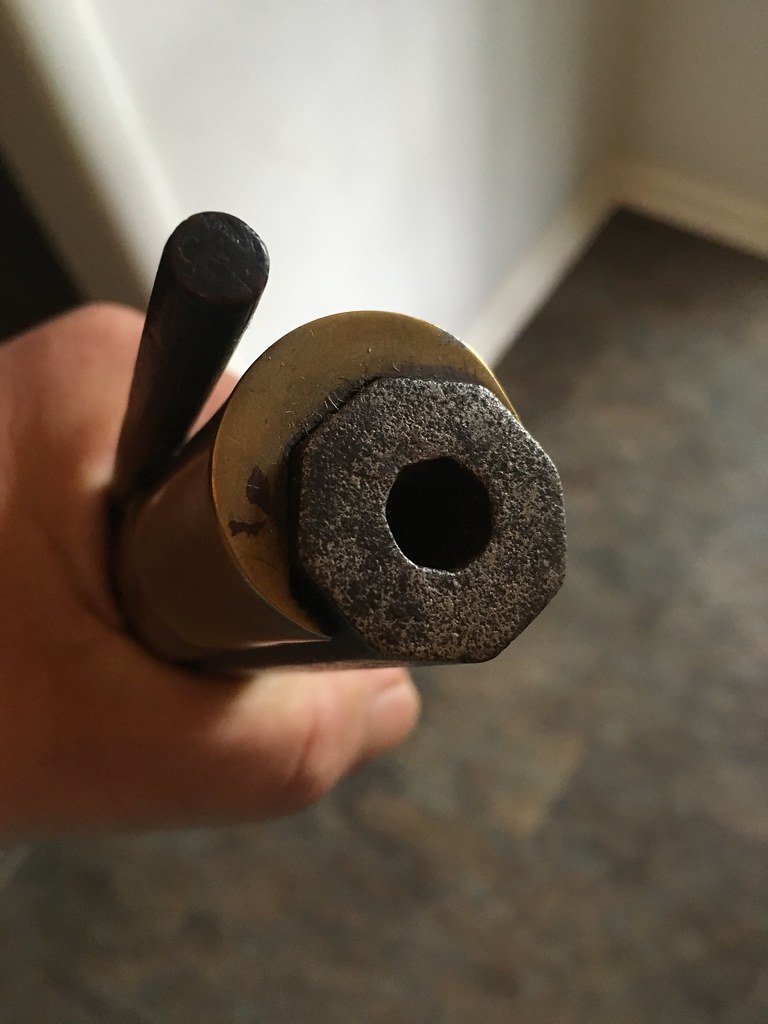54ball
62 Cal.
- Joined
- Aug 23, 2004
- Messages
- 3,117
- Reaction score
- 1,020
Did I make a good choice? Am I a fool, should I ask for square bottom rifling? Or for my usage would round be better? Also I plan to come the muzzle so I won’t need to carry a starter and I hear the old timers never used a starter so it’s more period.
Thoughts?
OK I get the Period thing but....
Coning so you do not have to carry a short starter is robbing Peter to pay Paul in the strictly PC sense.
There is a debate about coned rifles and what exactly it is. Some rifles show evidence of possible coning....most do not.
Those that do....just what is it?
Is it wear?
Is it repaired wear?
Is it coning for easier loading?
A few old "Germanic" influenced American rifles will show decorative Crowns where shapes are filed into the grooves at the muzzle. This can be very elaborate.
Is this coning? No.
For some reason RCA 124 the "Free Born Rifle" comes to my mind.
In the latest editions of Rifles of Colonial America, this rifle has a 44" .54ish barrel with that highly decorative crown filing.
In the older 1970's editions this same rifle has a 36" barrel with little if any crown! :shocked2: :hmm:
This rifle was "stretched" within the last 40 years.
You are having an Appalachian Poor boy built. While one should never say never, personally I have no knowledge of a Appalachian type rifle being "coned".
Many will have muzzle decoration...dots...circles, sometimes stars...."Hex" marks....but I can't recall reading or seeing any that are coned.
I have seen quite a few small bore rifles of the late flint/percussion period with no crown! IE The barrel looks as if it's simply cut off ....flat.
Here is my Jacob Roosa from 1840....the only original I own....
 Untitled by Travis Brown, on Flickr
Untitled by Travis Brown, on FlickrThe rifling on this little rifle is worn. It has been unbreeched and inspected as the former owner wanted to make a shooter out of if. It shows no evidence of being coned and the crown is minimal.
In my opinion this typical of the period for a common rifle....IE no cone....minimal crown.
So it's incorrect in my opinion to "cone" a rifle for "Period Correct" reasons especially from this era (1820-1850) and class (Appalachian back country) of rifle.







